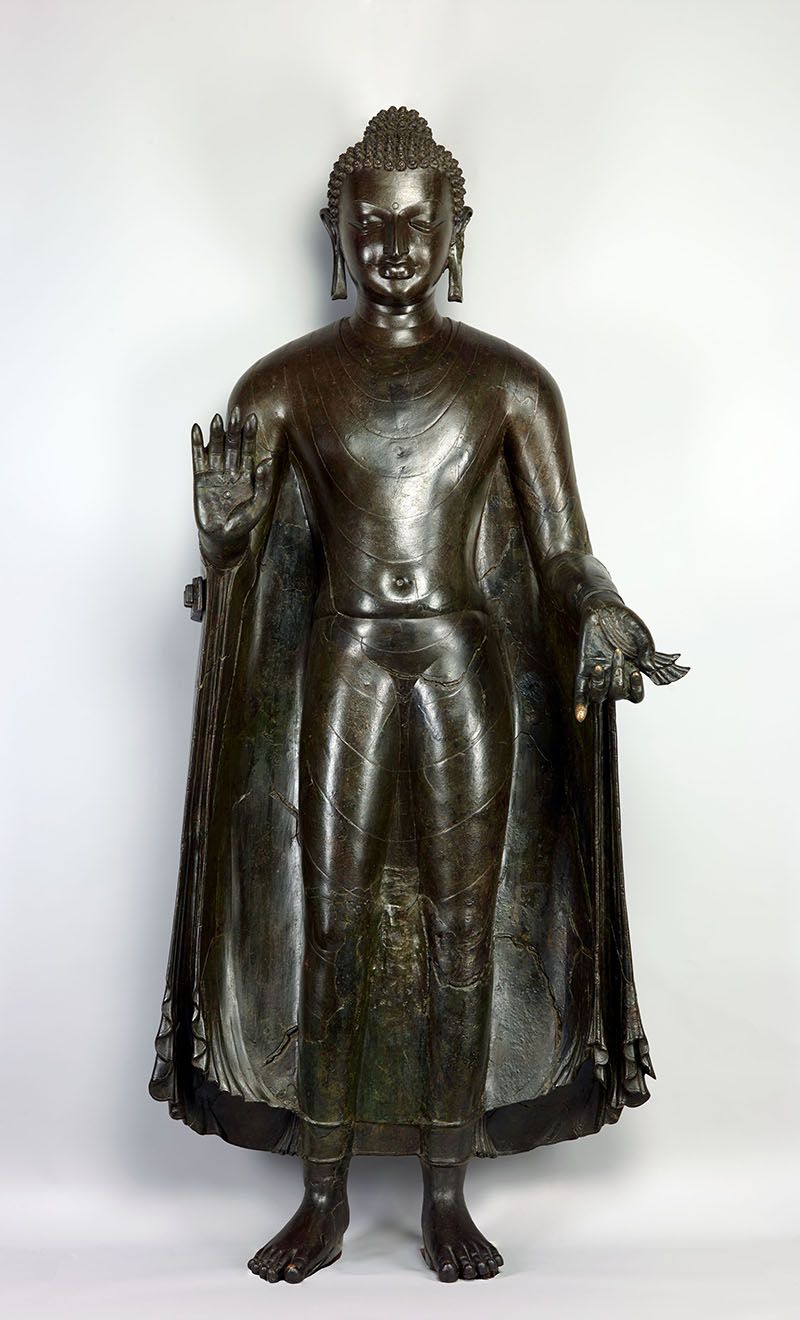A large metal sculpture discovered at Sultanganj in present-day Bihar in 1861–62, the Sultanganj Buddha is currently housed in Birmingham. It is the largest known cast metal sculpture from the early mediaeval period and is generally dated to between the sixth and eighth centuries CE. The statue has had a complex history of display, participating in scholarly debates about cultural appropriation and reparation, and is now an object of spiritual devotion for Buddhists.
The statue is 2.3 metres in height and weighs over 500 kilograms. It was found buried upside down in a cavity in proximity to an apparently defaced stone Bodhisattva, leading to speculation that it was buried during a period of attacks on religious sites in the area. Several Buddhist mounds were also located nearby. The sculpture was cast using the lost-wax process in a number of different sections. It features Buddhist attributes also seen in sculptures at Sarnath and Mathura. These include a fleshy torso, stiff rounded legs, accentuated kneecaps and an abhaya mudra made by the right hand, raised to just below the shoulder. The facial features are more sharply defined than examples from western India at the time, and the sangathi (monastic robe) is demarcated by fine, slit-like carvings to suggest folds and emphasise the body. These characteristics have led some scholars to suggest that it was produced at Nalanda or Bodhgaya, possibly representing an eastern variation of the Gupta style.
Soon after its discovery, a metal manufacturer called Samuel Thornton paid to have the statue moved to Birmingham in the United Kingdom. It was one of the first major acquisitions by the Birmingham Museum and Art Gallery (BMAG), and was put on display in 1867. Later, several scholars including the antiquarian Raja Rajendralal Mitra engaged in debates about the significance and rightful location of the Buddha statue. Accusations of cultural appropriation have dogged the statue ever since, culminating in calls for its return to its place of origin in 1998 by a local Labour Party councillor in Birmingham. The Archaeological Survey of India and other organisations also asked for its return at various points.
The BMAG, where the statue is still housed and displayed, has evolved its own practice of showing the Sultanganj Buddha to visitors over the decades. After being shifted between various galleries, a dedicated Buddha Gallery was arranged in 1997–98. More recently, the museum has made an exception to how devotees, distinguished from ordinary visitors, interact with the sculpture. Buddhists offer flowers to and sprinkle water on the statue on Buddha Day, associated with the birth, death, and enlightenment of the Buddha. This has become a regular religious ritual that is not extended to any other objects in the museum.
The Buddha Gallery was closed and re-developed in 2015. The statue was eventually moved to a new gallery called “Faith in Birmingham,” where it has stood since 2016.







